Marketing Localization: The Only Guide Worth Your Time
Marketing localization doesn’t work every time. It doesn’t even work every other time. But when it does, the investment pays off tenfold.
Ever heard of Asana?
This American software company generates 2.2M monthly organic visits through localized marketing.
How?
In 2021, the company localized its website into Spanish.
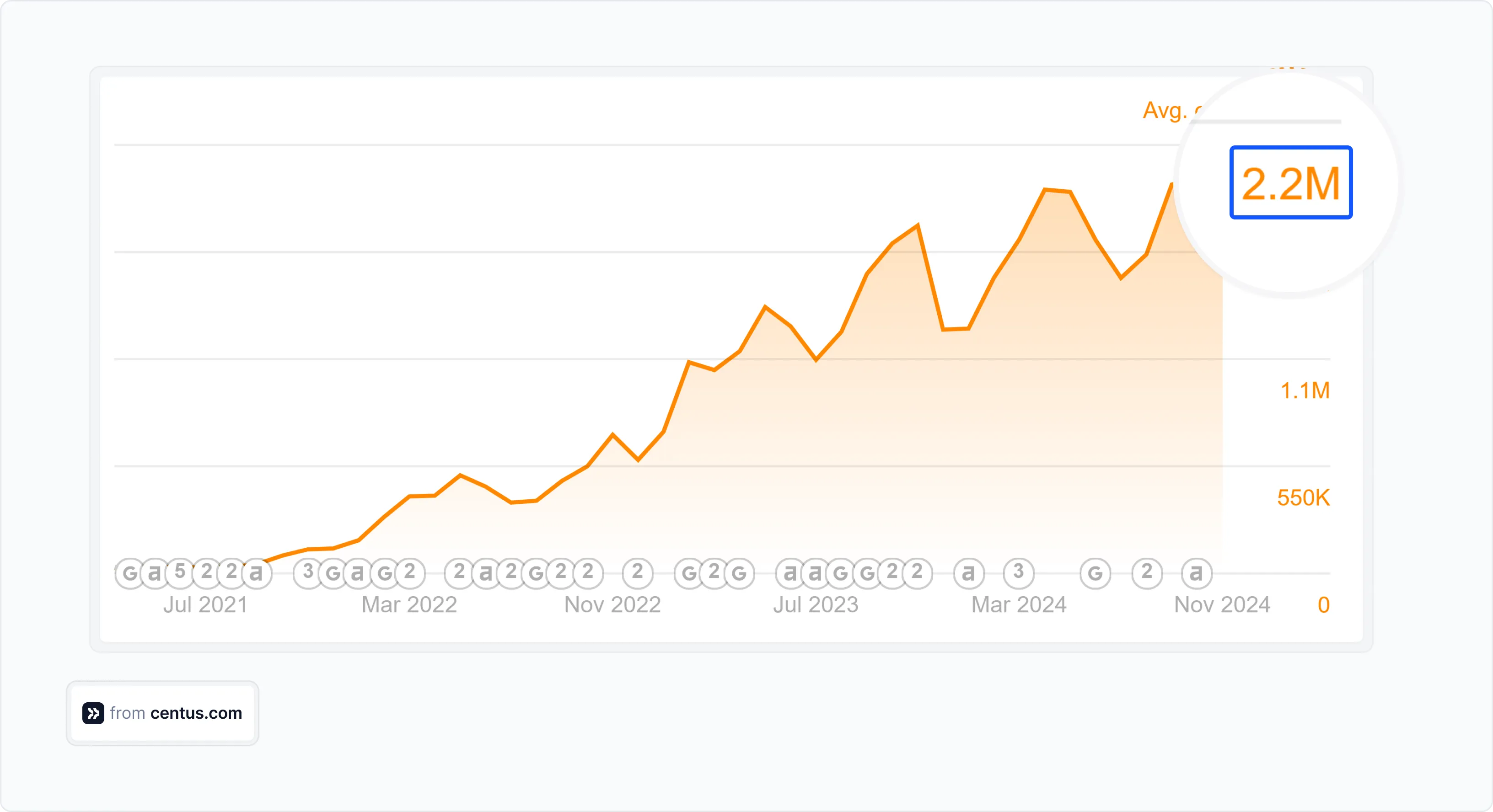
But that’s not all. Asana has also localized the website into 12 more languages, bringing in 3.9M of monthly local traffic 🤯.
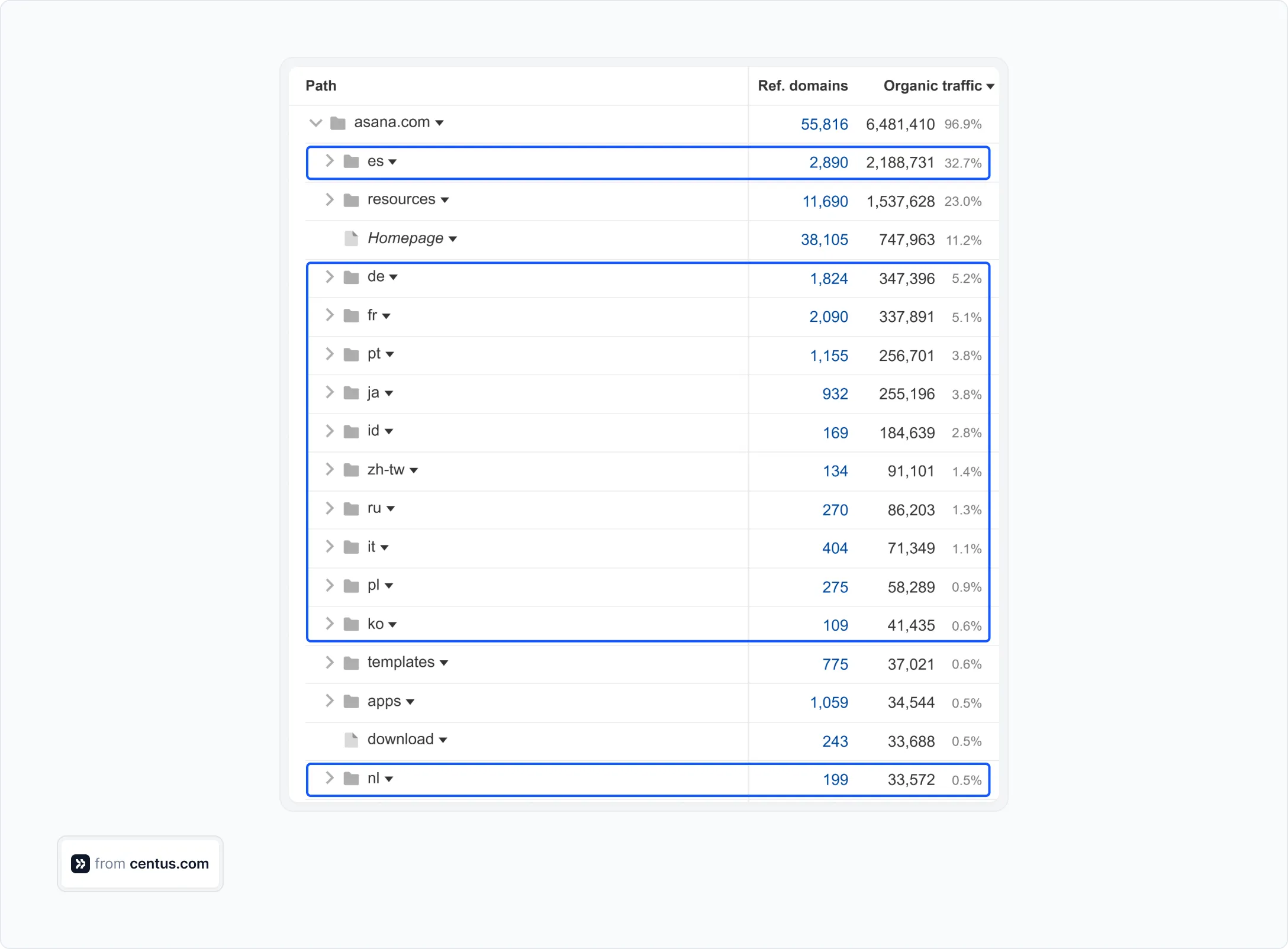
And I know what you’re thinking:
Marketing localization is more than just the one-two punch of website translations and international SEO localization.
You’re right.
In this guide, I’ll also cover advertising localization, social media localization, email marketing localization, and everything in between to help you build a marketing localization strategy for any market.
But first, let’s go over the basics.
What is marketing localization?
Marketing localization is the adaptation of marketing strategy and content to a target locale. This process aligns your marketing efforts with the local language, culture, and preferences, driving engagement and conversions.
If you squint, the localized marketing process seems to be pretty straightforward.
It’s not!
Marketing localization is not as simple as running content through a translator. For a successful marketing campaign, localize:
- Message, references, and humor to resonate with local audiences
- Visuals, design, and colors to appeal to local preferences
- Dates, addresses, phone numbers, symbols, and units to fit local conventions
- Currency and payment methods to match local preferences
- Pricing and seasonal offers to match local purchasing behavior
- Marketing channels to capture the attention of local audiences
- SEO to perform well in local search
- Customer support channels to align with local expectations
- Legal terms, policies, and disclaimers to comply with local laws and regulations
What types of marketing content require localization?
Localize everything that contributes to your marketing efforts:
- Ads (display ads, PPC ads)
- Social media posts
- Emails (newsletters, promotional emails)
- Website content (product pages, landing pages, blog posts)
- Videos (ads, explainer videos, YouTube videos)
- E-books and whitepapers
- Infographics
- Webinars
- Press releases
- Product demos
When I said to localize everything, it wasn’t just because I wanted to quickly throw together a list and grab a coffee. That was only a small part of it😃.
I risked eye rolls from some of you because localizing everything is the only way to effectively convert prospects with your marketing campaigns.
Picture this:
You’ve localized advertising. Localized landing page. Localized the entirety of your website, leaving only a demo unlocalized.
Bounce!
A prospect hits the language barrier and bounces.

To avoid such funnel leakages, localize everything.
Of course, we all have limited marketing budgets. And when you decide to shift some of your budget away from paid ads to localization, I won’t be one to squabble over an unlocalized website page.
Do what works best in your situation, but if you miss occasional conversions, caveat emptor, my friend.
Why do you need marketing localization?
It all comes down to your prospects and your company’s bottom line. Marketing localization is a win-win for both. And in more ways than one.
Here are the benefits of a marketing localization strategy:
Benefit #1: Lead generation
In the opening paragraph, I showed how much traffic one can get by localizing their website. In short, a whole ton.
But how exactly do you generate new leads with the help of localization?
The premise is simple:
Localize your marketing across all touchpoints to drive traffic and boost engagement, thereby generating leads.
Take, for example, Salesforce, which localizes its marketing across the board.
Among the company’s recent successes is the localization of the ad promoting its State of Marketing report.
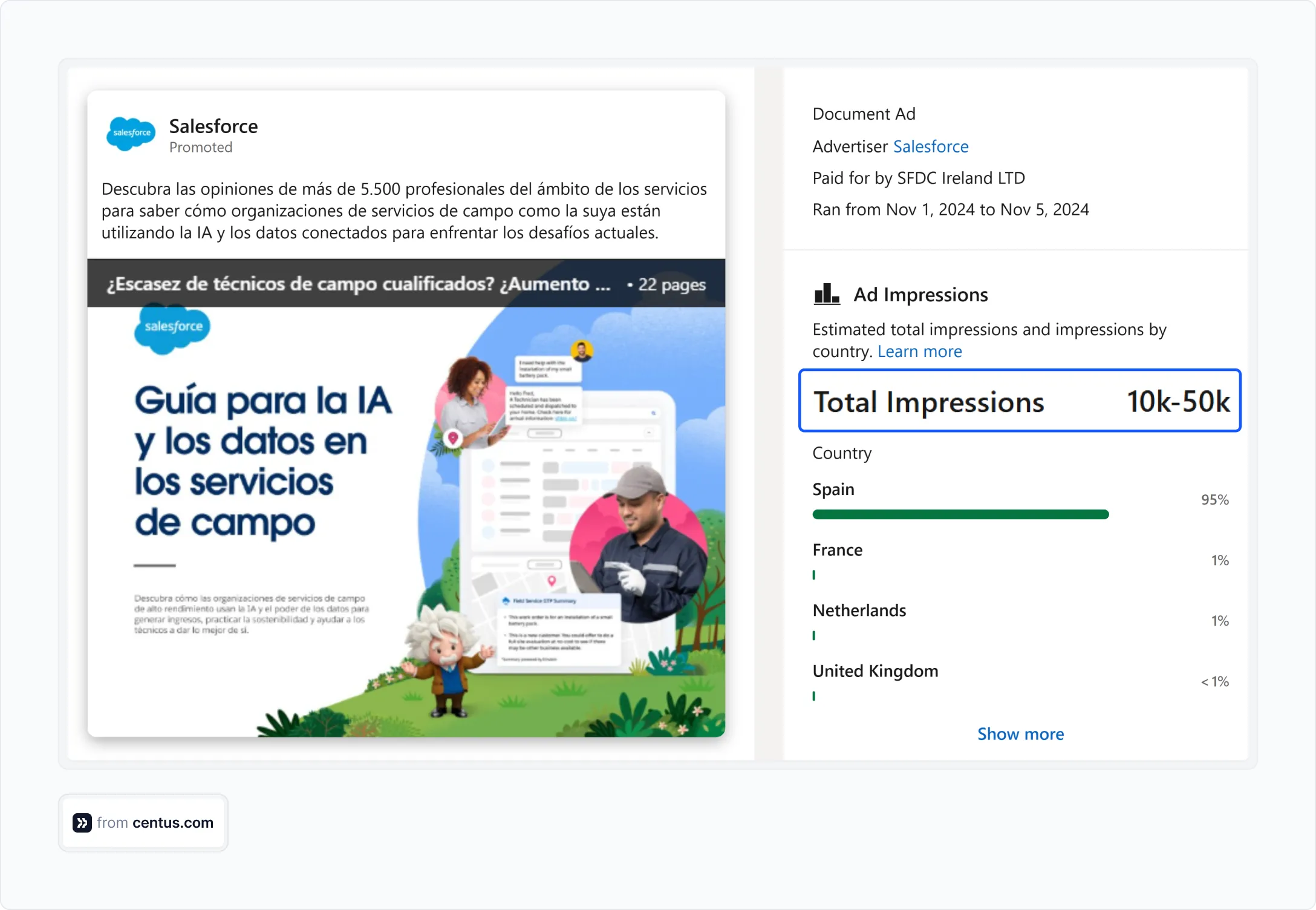
After being shown for just five days, the ad gained between 10K and 50K impressions among Spanish-speaking LinkedIn users. At the conversion rate of 3.5 percent, Salesforce is looking at 350 to 1,750 leads. Not too shabby!
Benefit #2: Higher conversion rates
Think about your prospects.
How are you going to convert those who don’t speak your language?
The truth is prospects have a high variance in how much they need your product, but a low variance in their preference for localized marketing.
76 percent of consumers prefer purchasing in their language.
As such, it’s really simple:
No localization, no conversion.
But don’t take it just from me:
- Up to 70 percent increase in conversion rates is reported by a former eBay executive.
- 40 percent of B2B customers won’t buy in other languages
Benefit #3: Increased engagement
Above, I mentioned Salesforce and its success with lead generation. Yet, you’ll be surprised how little engagement the company gets on some of its social media channels.
Take YouTube, where the company inches toward a million subscribers.
Salesforce’s—genuinely useful—video with over 4.2M views garnered only 521 likes and 18 comments. I repeat: a mere 18 comments!
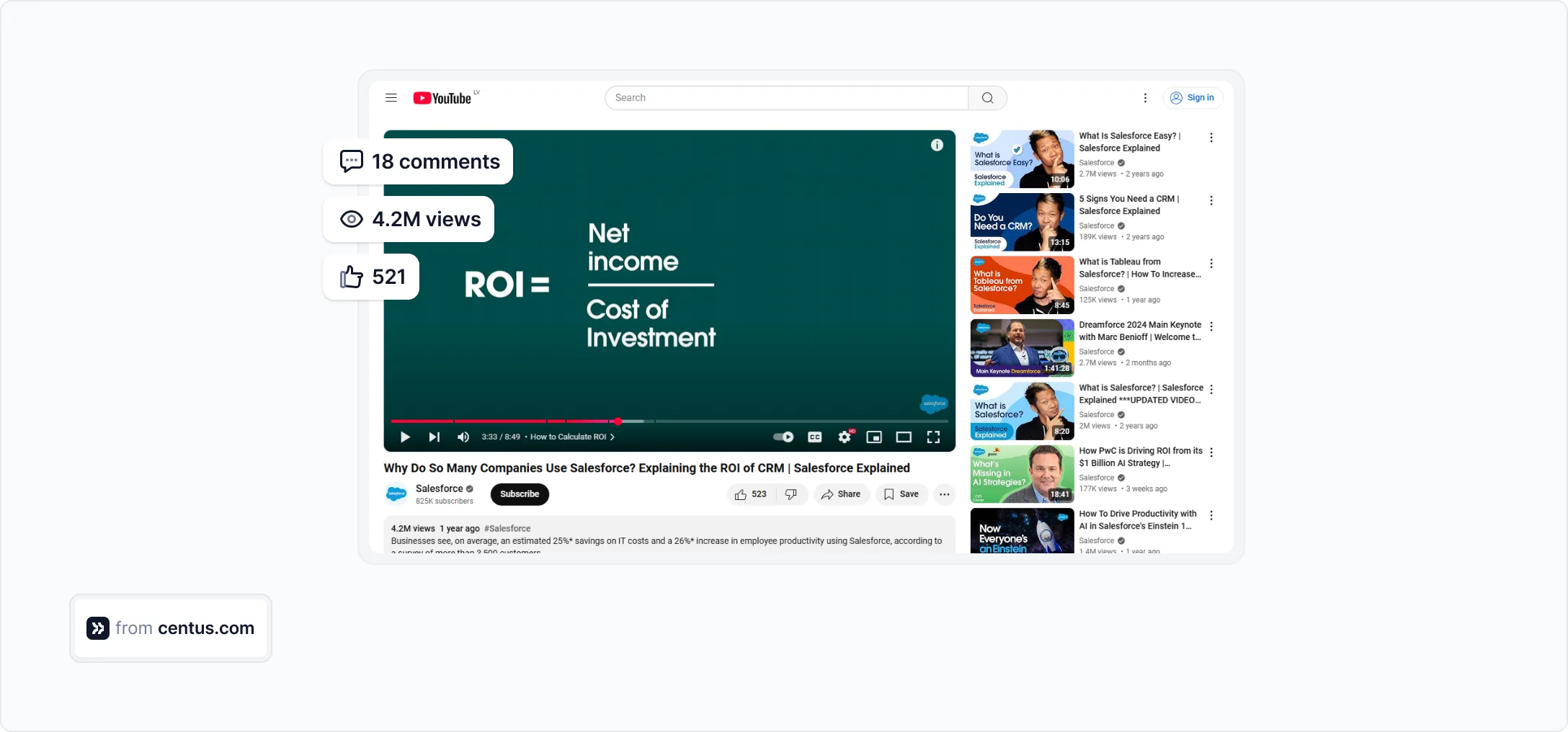
How do you move the needle?
With marketing localization, of course.
Companies that target local audiences with custom marketing content, see their engagement skyrocket 🚀.
Just look at HubSpot’s YouTube channel where videos garner thousands of likes and dozens of comments.
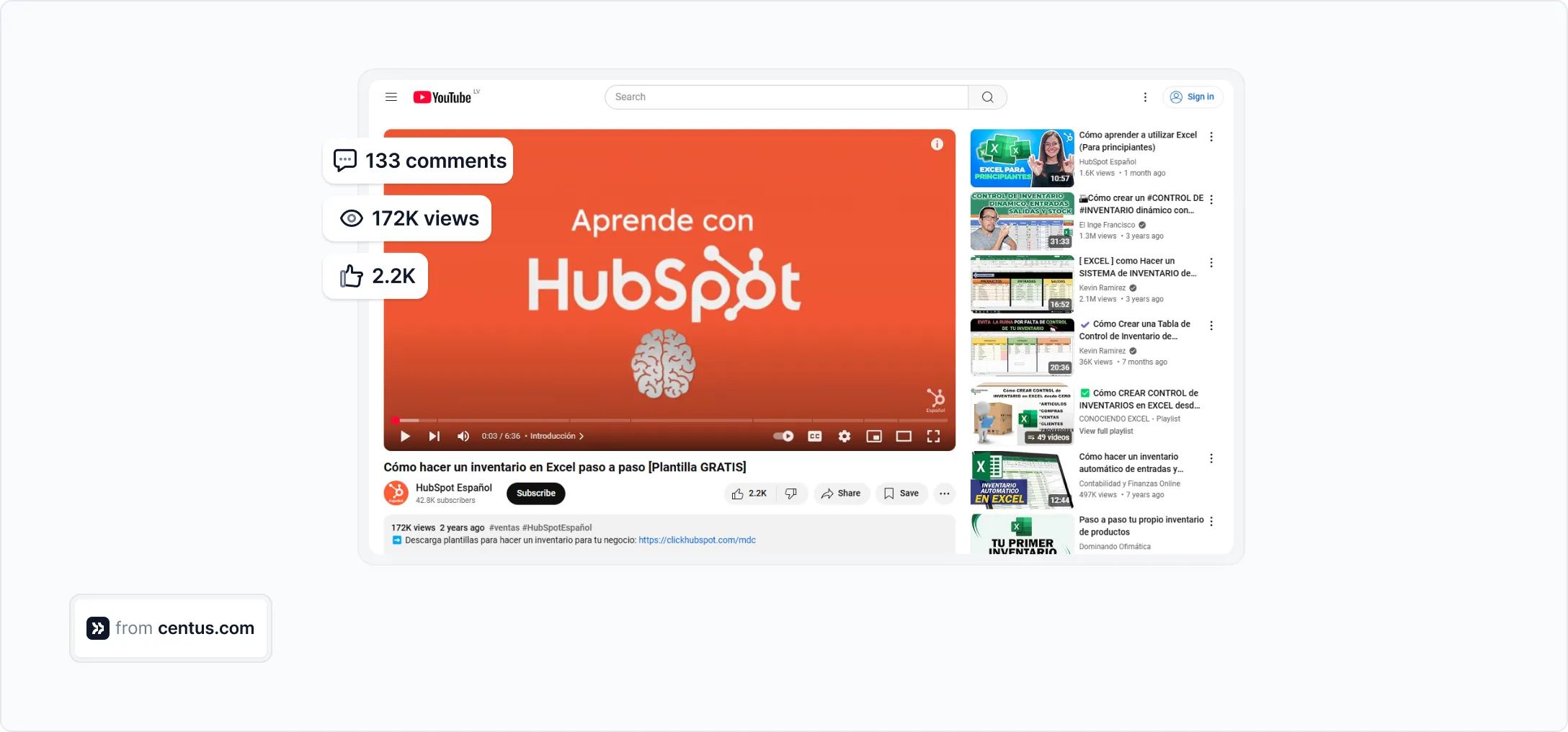
With 172K views, the video has 133 comments and 2.2K likes. Another win for marketing localization.
Marketing localization ROI and KPIs
A good marketing localization strategy?
One that generates more revenue than it costs. Ideally, much more.
❗NOTICE TWO THINGS❗
First, I mention revenue.
Second, notice how I don’t mention other results, like engagement, brand awareness, or conversion rate.
That’s because marketing localization is a huge investment with unknown payoffs. To justify the expense, you need to demonstrate its value clearly and do it fast.
While you can—and should!—have many metrics, localization ROI must be your North Star Metric (NSM).
Why?
Because there’s a positive feedback loop between localized marketing ROI and localized marketing campaigns👇
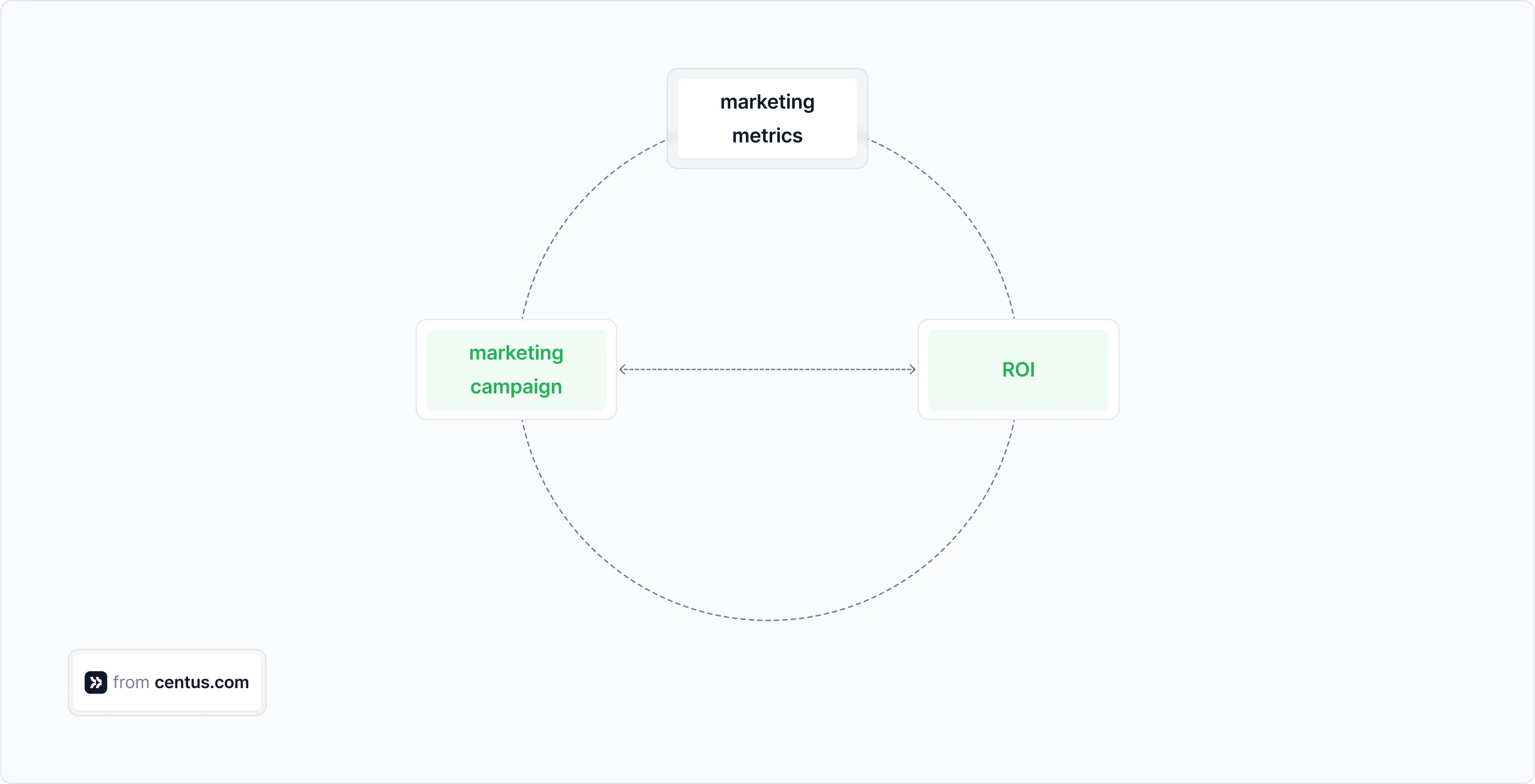
More ROI fuels more marketing campaigns, kicking the loop into a perpetual cycle.
Without recurring revenue, you’d struggle to prioritize marketing metrics that don’t immediately impact your bottom line. However, when you make revenue your NSM, other metrics become a natural byproduct of the process.
How to calculate marketing localization ROI
When I, an overconfident marketing autodidact, first needed to calculate ROI from marketing localization efforts, I used this simple formula:
localized marketing ROI = (localized campaign return — localized campaign cost) / localized campaign cost) * 100
Elegant and exhaustive. Or so I thought 🫠.
Things got hairy when I tried to calculate the campaign cost and campaign return.
Campaign returns
I needed to attribute the role of localization to the sale of our SaaS product.
If a customer purchased a subscription after reading a localized blog post, should I also attribute a localized ad they’ve seen? Who gets credit for a conversion after reading multiple social media posts and blog posts? Panic!
To untangle things, I decided on an attribution method for my marketing content:
For localized content targeting prospects at the awareness stage, I chose the first-touch attribution method.
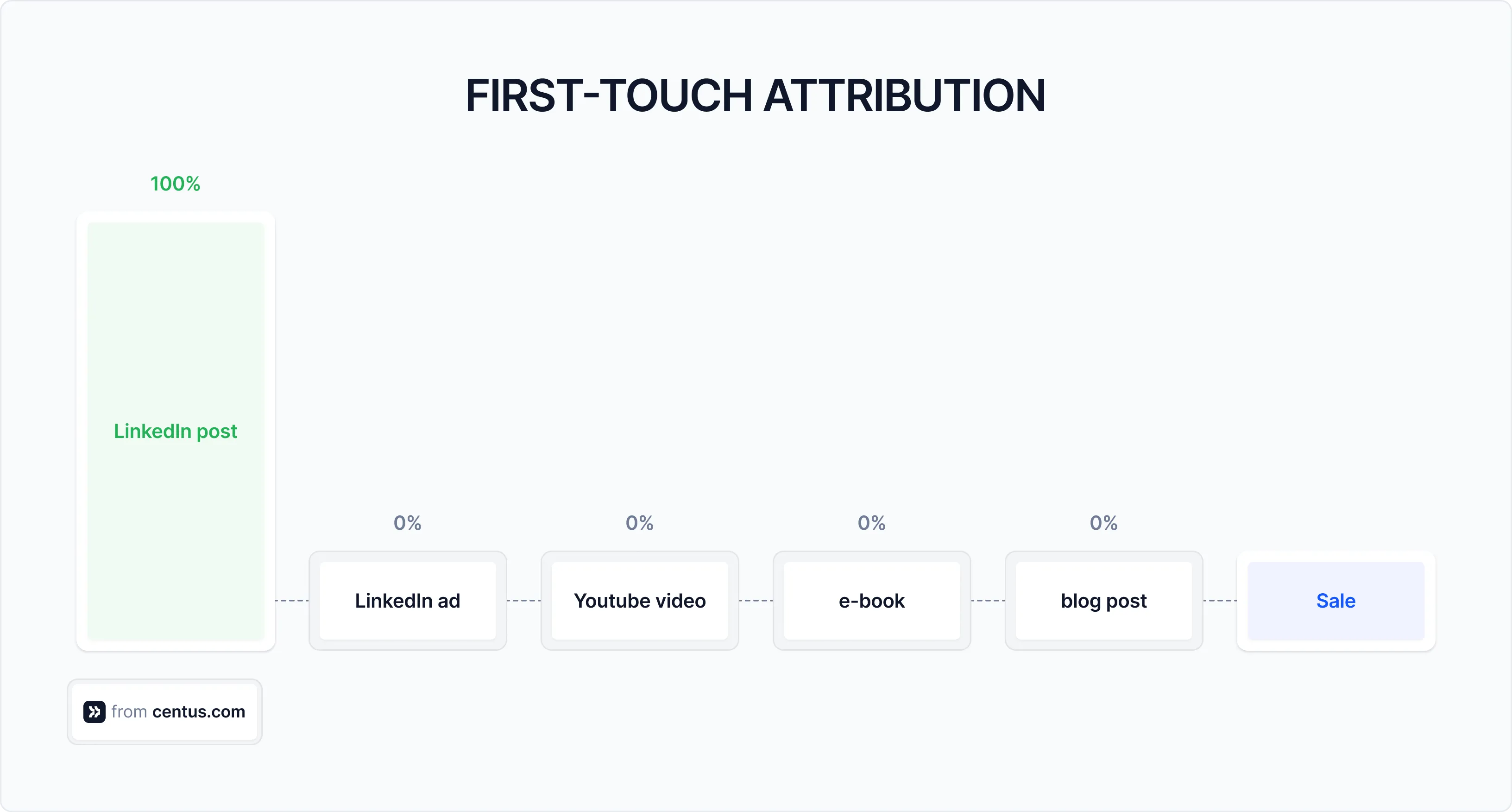
Under this method, the first piece of localized content encountered by a prospect gets the full credit for a sale.
The ROI formula for the first-touch attribution method looks as follows:
first-touch ROI = (return from the first−touch content — localized campaign cost) / localized campaign cost) * 100
For content targeting prospects at the consideration stage, I chose the multi-touch attribution method.
 Now, there are multiple ways to distribute credit between multi-touch touchpoints.
Now, there are multiple ways to distribute credit between multi-touch touchpoints.
To keep things simple, I chose even weighting—all touchpoints received equal credit for a sale.
Apparently, impeccably credentialed experts from Nielsen also wanted to keep my life simple, as they recommend this attribution method for long consideration cycles. Perfect for SaaS!
Here’s the ROI formula I used:
multi-touch ROI = (return from all touchpoints — localized campaign cost) / localized campaign cost) * 100
Finally, for localized marketing content targeting prospects at the decision stage, I chose the last-touch attribution method.
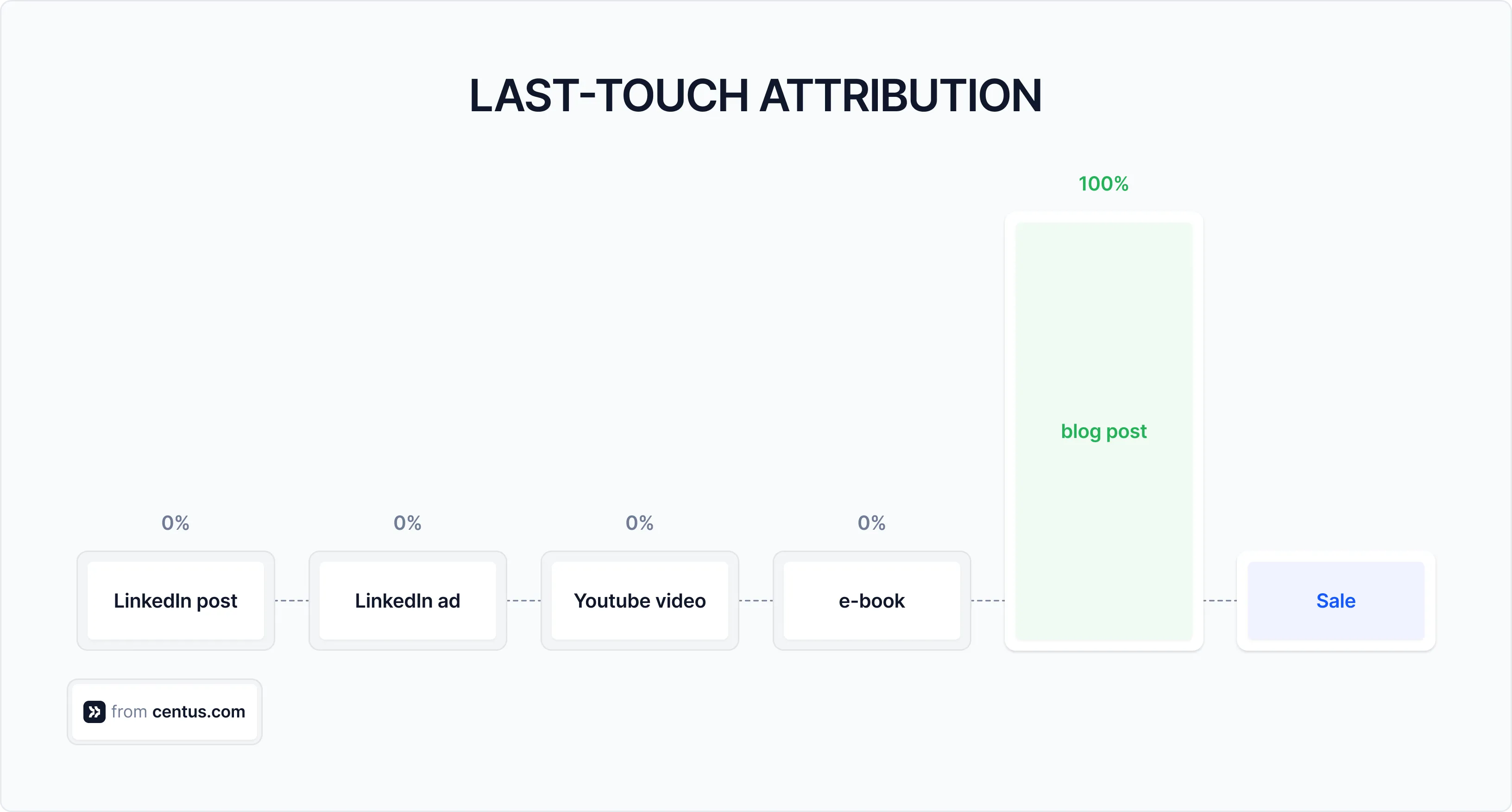
Here, I attributed all credit to the piece of content that tipped the scale and nudged them toward a subscription.
To calculate ROI, I used this formula:
last-touch ROI = (return from the last−touch content — localized campaign cost) / localized campaign cost) * 100
All my marketing content is tagged as TOFU, MOFU, and BOFU, aligning with the three stages of the buyer’s journey mentioned above. Not surprisingly, it wasn’t difficult to assign contribution methods to the three groups.
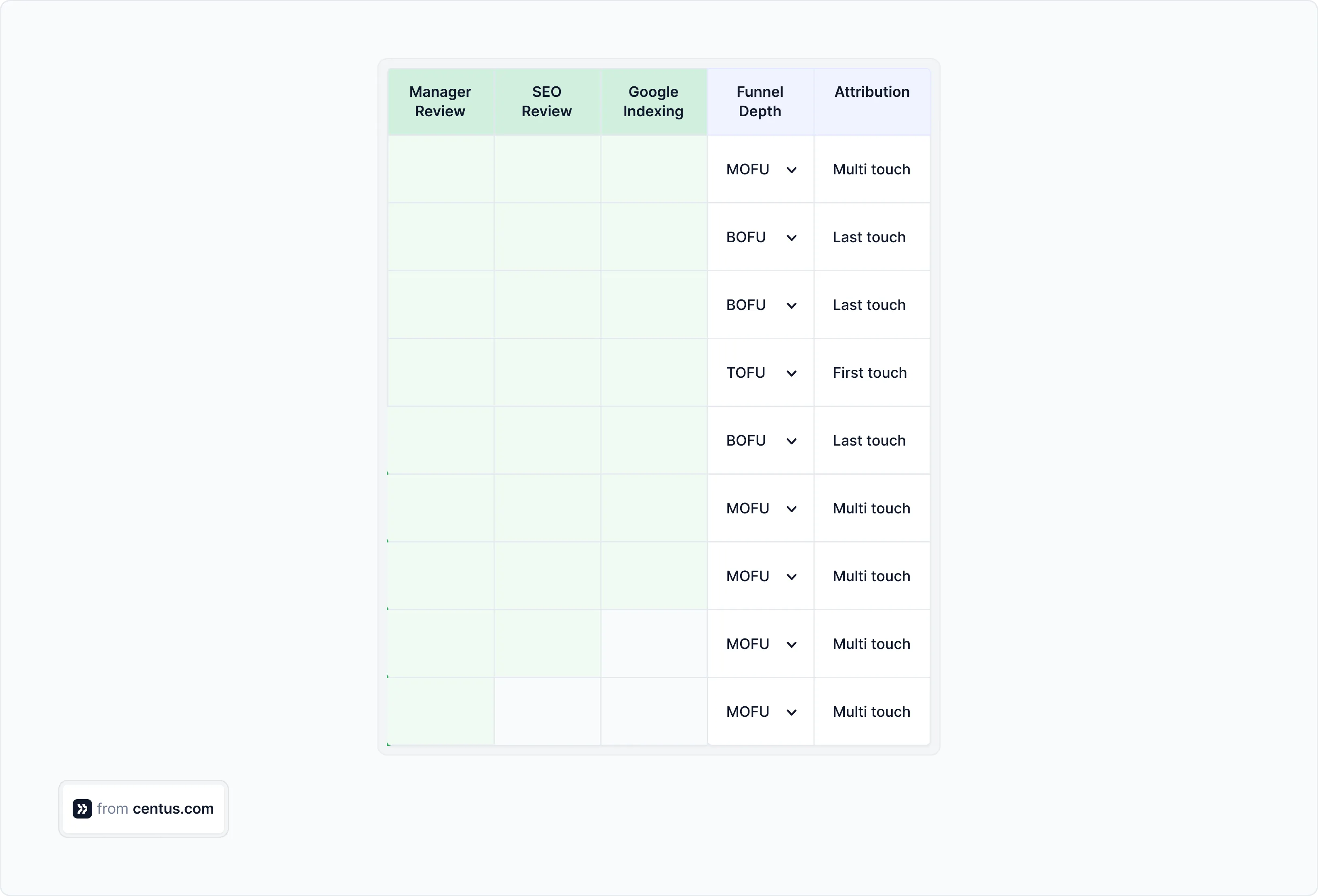
Campaign costs
Surprisingly difficult was the calculation of campaign costs.
Why? Several reasons.
I knew the exact cost of paid search ads and other advertising spending. Duh.
However, calculating the cost of content localization probably cost me a few aneurysms.
Marketing content was localized by a combination of outsourced and in-house teams. Freelancers handled translations, while our in-house experts took care of the design and website.
Our in-house team didn’t dedicate all their time to marketing localization. Therefore, I had to communicate with each team member to roughly estimate the time they spent localizing our marketing content. (Thanks for bearing with me, guys👋!)
Then, I calculated the cost using this formula:
in-house team cost = (total salary / total work hours) * hours spent on localization
Some freelancers had different rates for different types of content, so I couldn’t simply add up their invoices. Instead, I counted separately the cost of translating blog posts, e-books, and videos.
To determine total campaign costs, I used this formula, pinned on the hope that my flawed little logic and fancy math would hold up:
campaign cost = cost of paid ads + cost of content localization (freelancer + in-house) + cost of design, development and management (in-house)
When all was said and done, I factored in all three methods of attribution to calculate the total ROI.
❗IMPORTANT❗
Splitting marketing localization ROI into three groups is the most effective way to manage localized marketing campaigns.
Why?
Because you can tinker with the three ROI models to find the most effective marketing strategies.
In my case, localizing more TOFU blog posts (awareness stage) delivered the highest ROI.
I suggest trying this method of ROI calculation to see what works best for you.
There’s no technological moat—all data can be easily pulled from Google Analytics, Google Ads, LinkedIn Ads, your email marketing platform, and CRM.
You’ll need to glean data anyway. Just don’t lump it together.
By splitting all marketing content into distinct groups, you can uncover patterns obscured by lumpy math.
Marketing localization KPI
Remember when I mentioned that you should have localization metrics other than your NSM of ROI?
Essentially, they shouldn’t differ from your regular marketing KPIs: customer lifetime value (CLTV), customer acquisition cost (CAC), market penetration rate, etc.
I’m sure, you don’t need my help setting and calculating these KPIs. But on the off-chance you do, find detailed advice in this handy guide:
📘 Relevant reading: How to build a localization strategy
After setting marketing localization KPIs, make sure to optimize them using the SMART framework 👇

How to build a localized marketing strategy
Now that you know how to measure the success of your marketing localization plan, let’s get to building it.
Step 1: Adapt your marketing mix
If you pursue local customers with unlocalized 4Ps (Product, Price, Place, and Promotion), they will look or click away.
Here’s how to tailor your 4Ps to local markets:
Product
While your overarching brand should be consistent, consider adjusting your packaging or product features to your current market. Even if you don’t adjust it to local preferences, at the very least, ensure it complies with local regulations.
McDonald's mastered the art of “giving the people what they didn’t even know they wanted.” The fast food chain offers menu items like veggie burgers in India and Teriyaki burgers in Japan to cater to local tastes.
 Source: McDonald’s
Source: McDonald’s
Price
Price your product competitively based on the local purchasing power and your competitor’s price. A product considered affordable in one market might be seen as overpriced elsewhere.
Understanding the importance of localizing the marketing mix, Netflix has lowered its prices to fit conditions in emerging economies like India, Pakistan, and Nigeria. The company has also introduced a low-cost mobile-only plan, which is significantly cheaper than other plans.
Below you can see Netflix prices across the globe:
 Source: Voronoi
Source: Voronoi
Place
Your offering should be readily available on channels convenient for your target audience. This might involve partnering with local distributors, using online marketplaces popular in the region (like WeChat and Douyin in China), or adapting your service model.
Convenience is key!
Promotion
I will cover promotion localization in the following sections. So, let’s hop right to the next crucial step in your marketing localization strategy.
Step 2. Translate your website
Do you want your prospects to pay attention to your marketing materials? Then make it easy to consume them! A good starting point is website translation.
If you don’t serve translated versions of your website to local visitors, you are sending them away. Luckily, website translation is easy with the right translation management tool:
Sign up to Centus and create a new project.

Add your HTML, CSV, JSON, DOCX, or other files. Then, you will see a convenient Editor where you can translate your website automatically.

After creating automatic translations, assign them to your team for review. Your editors can review content and share feedback with translators or other project contributors.
Pro tip: Don’t forget to localize website UI and UX.
Step 3. Localize e-books and whitepapers
If you aren’t just getting started, your website is probably brimming with downloadables. These could be whitepapers, ebooks, presentations, tutorials, or other content providing value to your visitors.
You need to ensure your visitors don’t click a link and discover an unlocalized landing page for an ebook. Or worse yet, they might end up downloading an unlocalized ebook after spending a minute filling up a form.
Streamline user experience by translating documents on your website.
Step 4. Localize visuals
Next, you want to localize imagery at every customer touchpoint. Whether it’s a website, emails, ebooks, or webinars, all visuals need to be localized.
Sounds like a breeze? Well, not quite.
What might be appropriate in one culture, could be jarring in another.
Take, for example, this playful promo on the UK version of the IKEA website:

The same summer promo looks much more grounded on the Saudi Arabian version of the website:
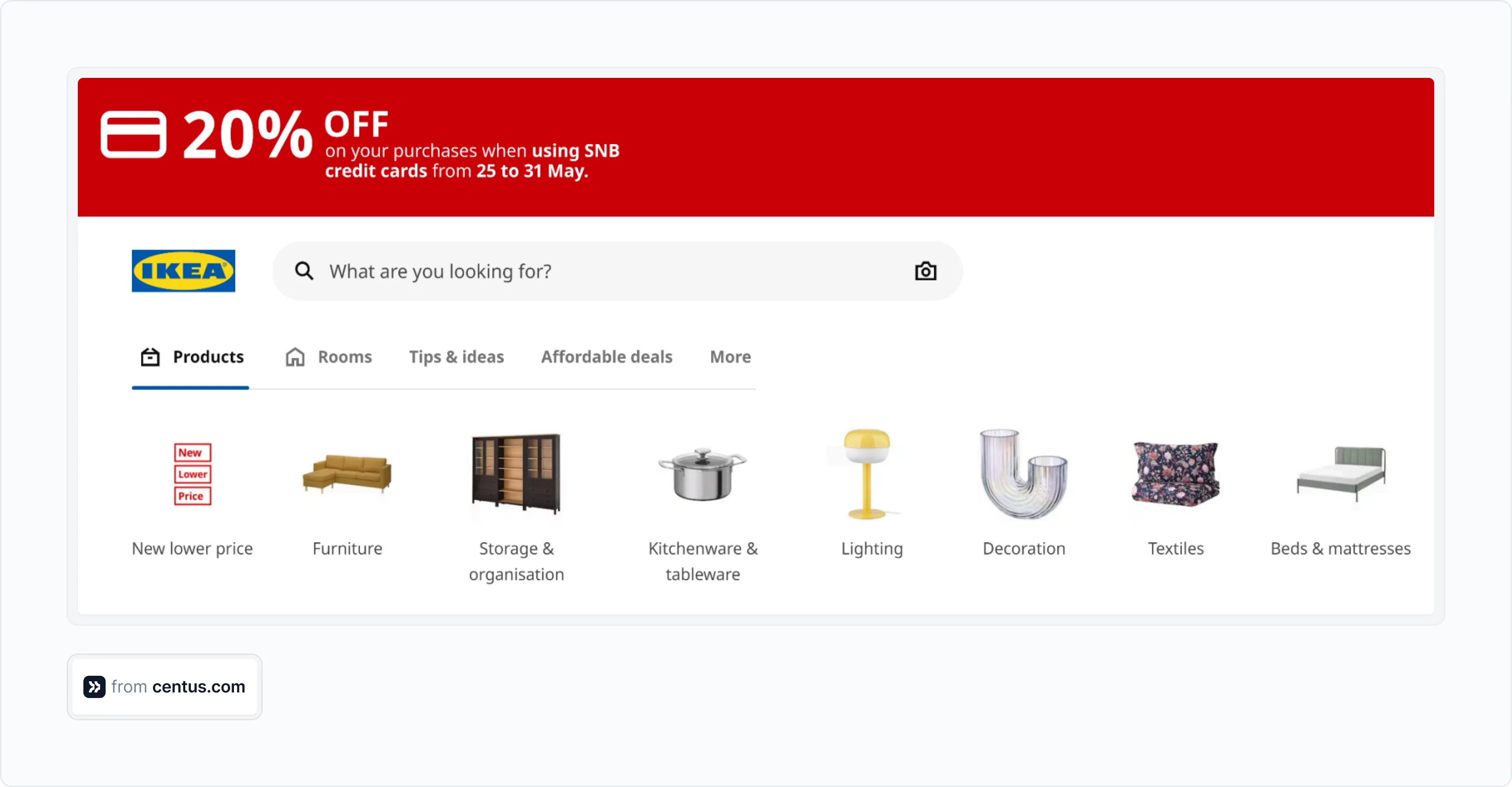
To properly localize images, research the target market’s:
- customs and traditions
- local color symbolism
- religious norms
- societal roles
- legal regulations
Using a localization management tool, like Centus, is the best way to help your team manage the localization of visuals. Just install the Centus plugin for Figma to automatically pull translations into designs. Thus, you can spare your designer a ton of manual effort.
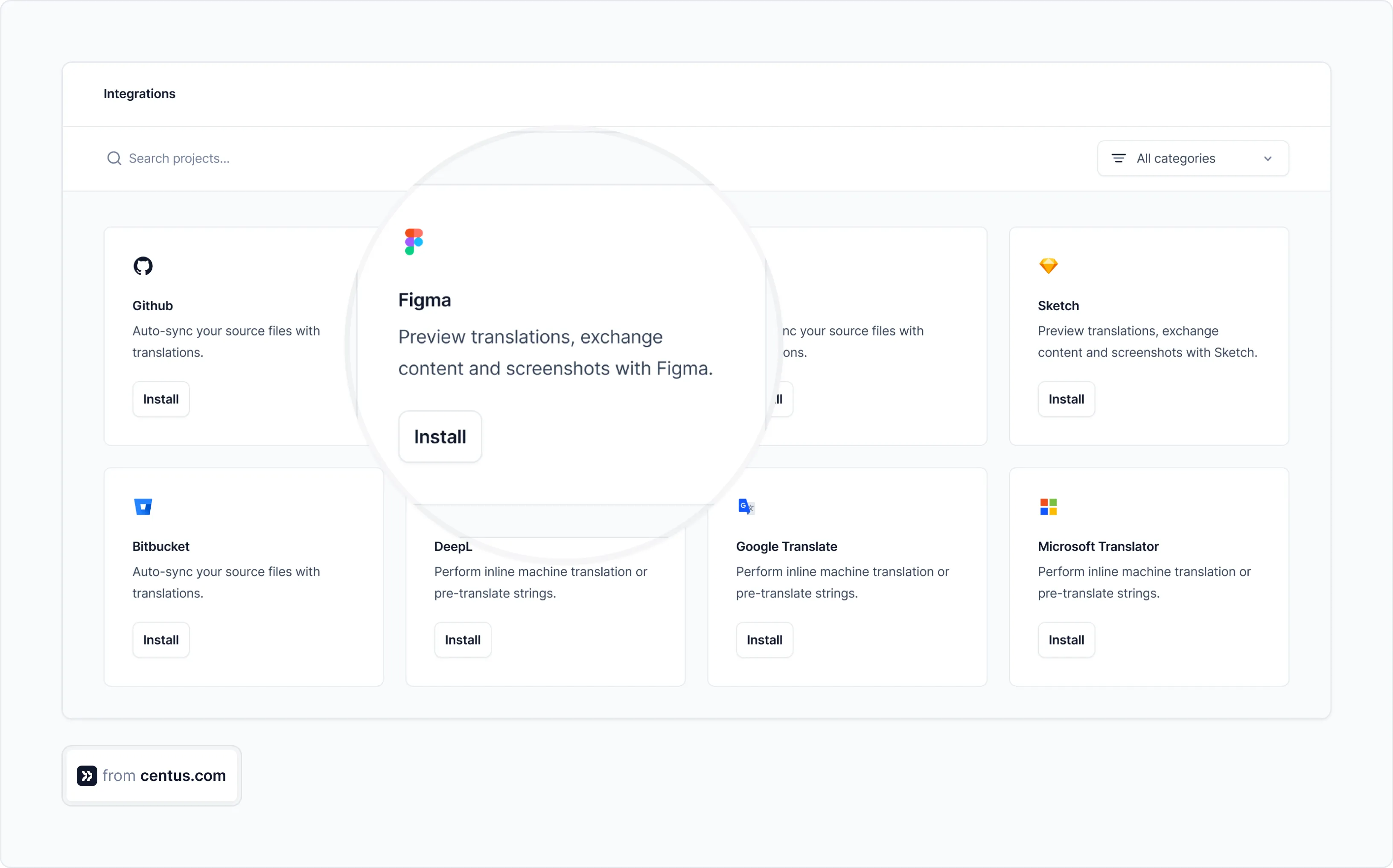
Step 5. Localize email campaigns
Your local customers have discovered your offerings. Now it’s time to give them a reason to return for more using a localized email campaign.
For local lead generation, localize both promotional and relational emails:
- Promotional emails: brand announcements, product releases, or trial offers.
- Relational emails: white papers, ebooks, webinars, newsletters, or blog articles.
Here’s how it’s done by Spotify:

Note that Spotify’s traditional green color gives way to the yellow background. Yellow is traditionally associated with power and wealth in Turkiye.
Interestingly, not every email is as exquisitely localized by Spotify. For example, images in this email remained unlocalized:
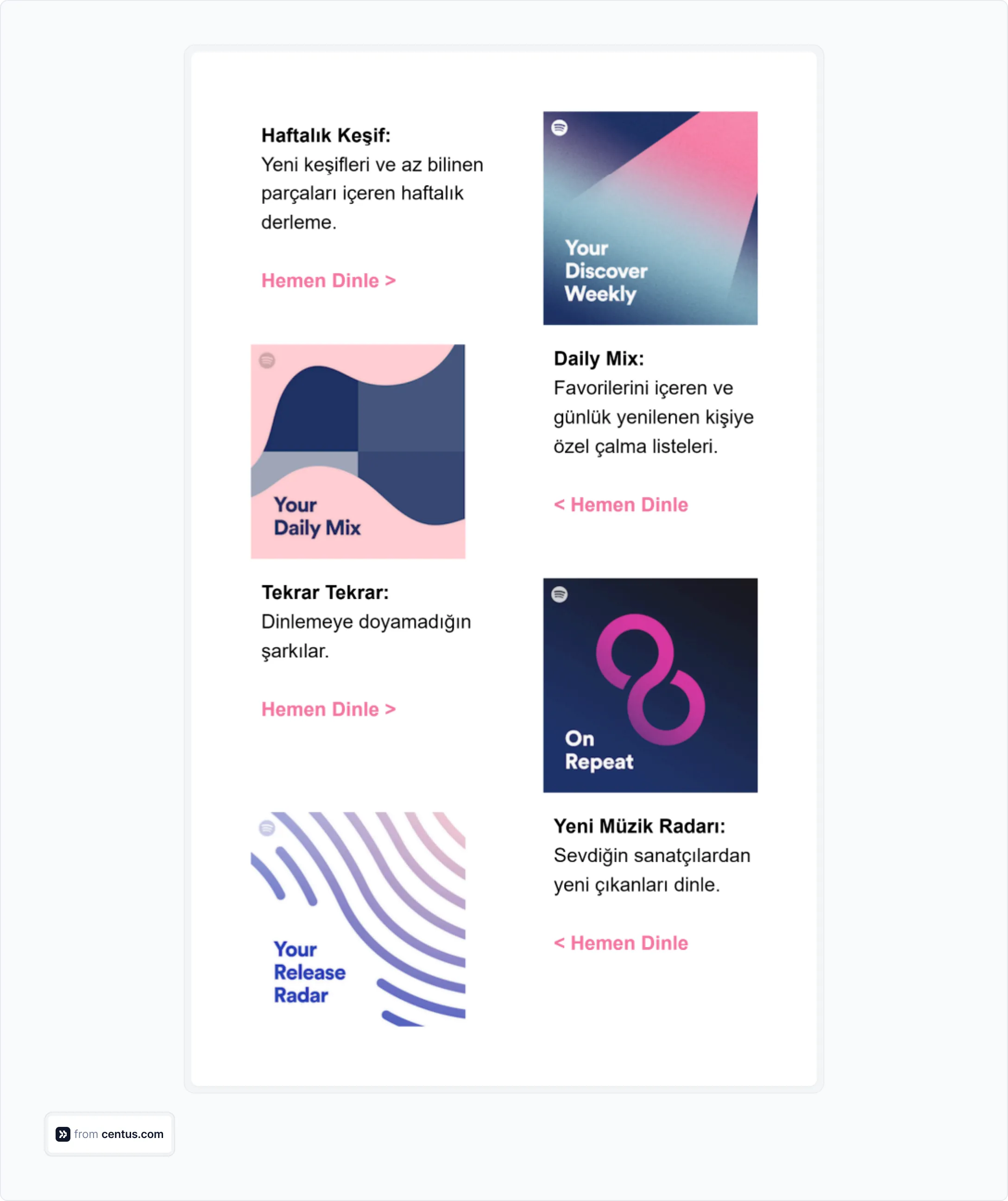
Unless you want your customer to juggle between their email provider and a translator, make sure to localize your emails completely.
Start by translating email content and then localize all email imagery. Once again, your best helper here is Centus.
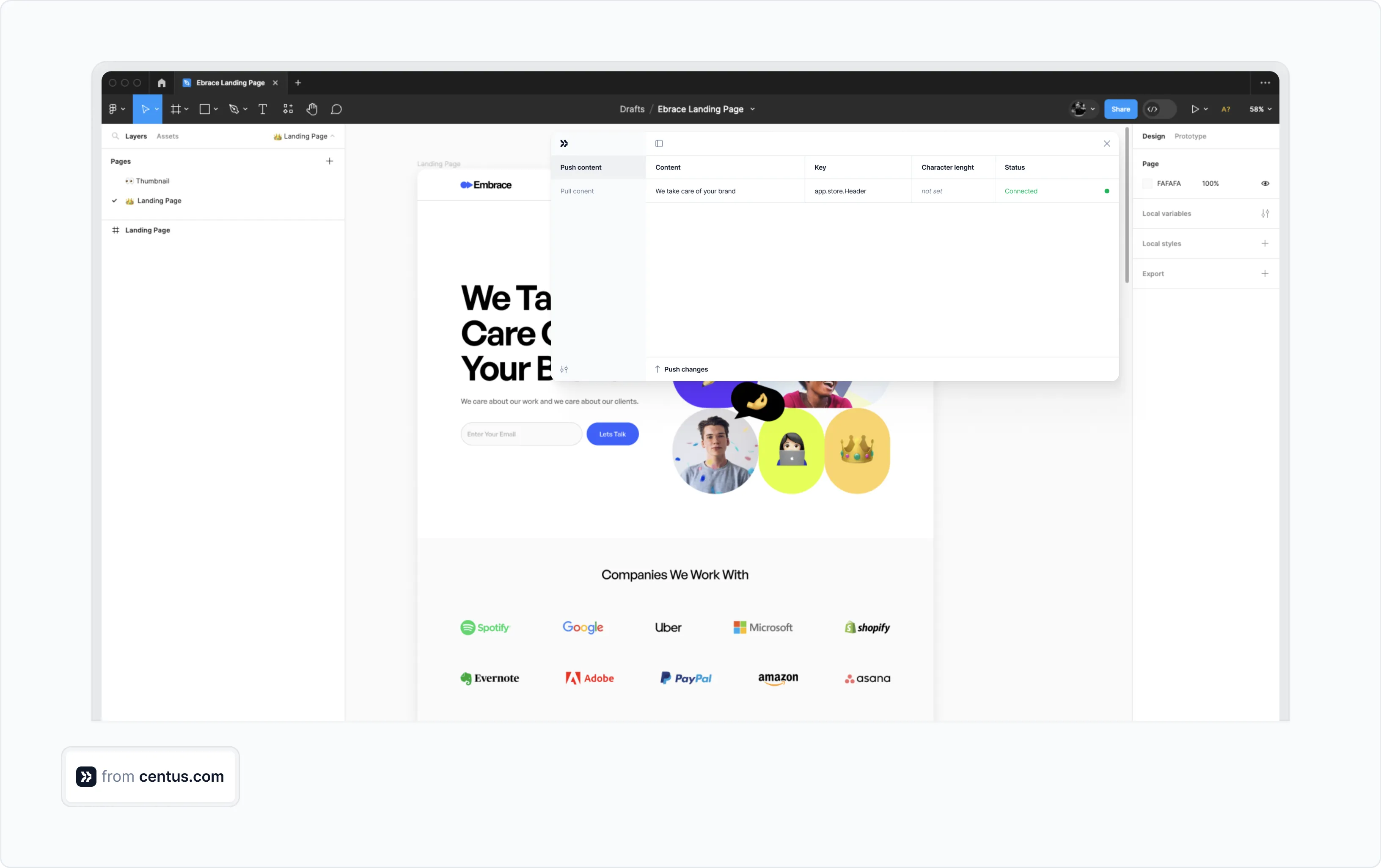
While promotional emails can be sent when needed, make sure to send the relational emails at the right time. The name of the game here is research.
Create an annual promotional calendar based on your local market’s culture. Add key events, holidays, and seasonal promotions.
Here’s an example of a promotional calendar specific to the Indian market:
| Date | Email content |
|---|---|
| January 26 | Republic Day greetings |
| March 8 | A special discount for Women's Day |
| March 25 | Holi greetings |
| April 11 | Eid al-Fitr greetings |
| July 1 | The GST filing deadline reminder with a promo |
| August 15 | Independence Day greetings |
| October 2 | Gandi Jayanti greetings |
| November 1 | a Diwali special discount |
| December 25 | Christmas greetings |
| December 30 | Tamu Losar greetings |
The trick here is to stay in your sweet spot. Find the overlap between your company’s products, events your customers care about, and discounts you are willing to offer.
Step 6. Perform local SEO
Don’t pin all your hopes on the translated website. It could easily get lost among the sea of similar websites.
To enhance your local marketing efforts, translate SEO keywords and double-check using SEO tools. This will help you avoid keywords with low search volume or wrong search intent.
Search volume
Let’s say, you’re selling solar panels in the US. To localize your website into Spanish, you use a directly translated keyword “paneles solares.”
But here’s the rub: 12,000 people search for “paneles solares” monthly. While 12,000 is nothing to sneeze at, you can optimize your pages for an even better keyword.
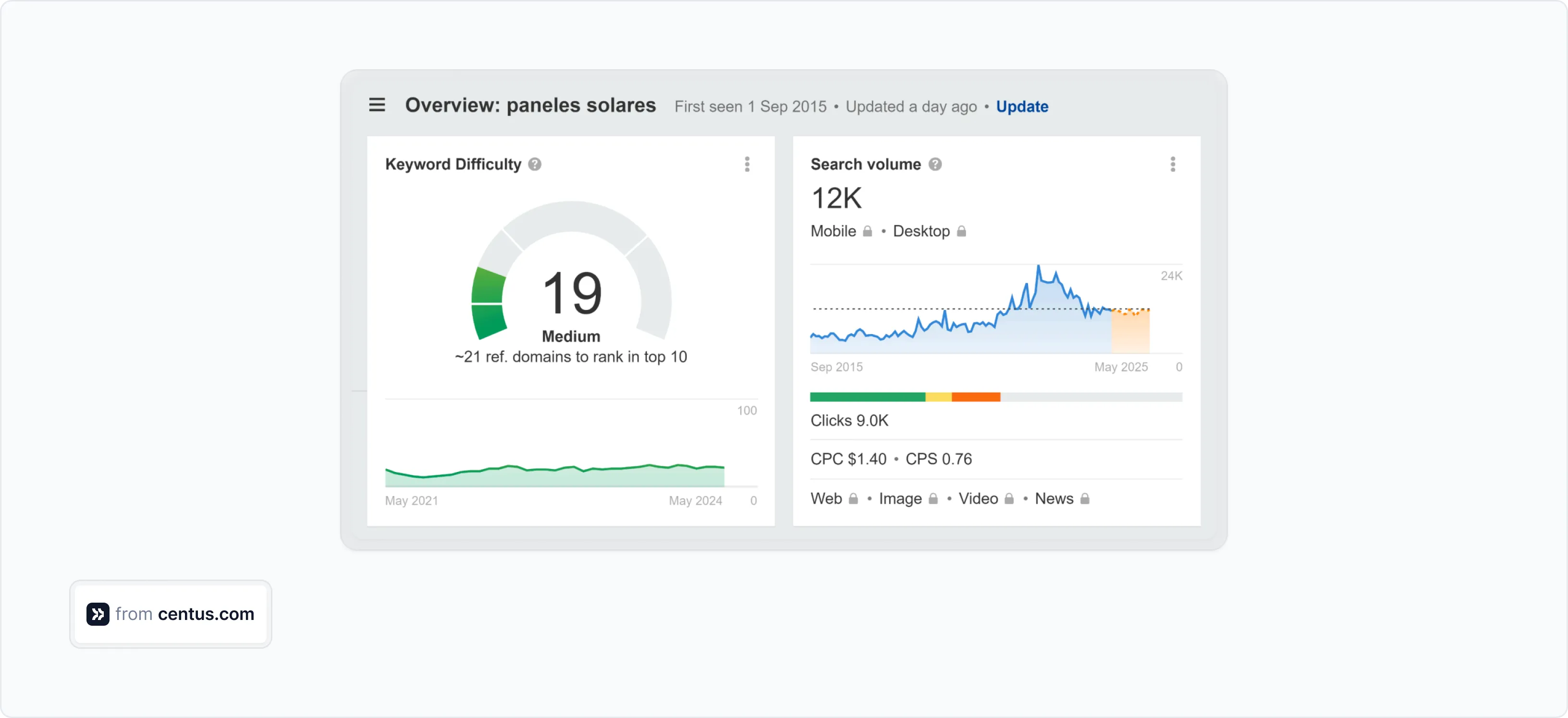
The keyword you are looking for here is “placas solares.” It has a whopping 33,000 search volume.
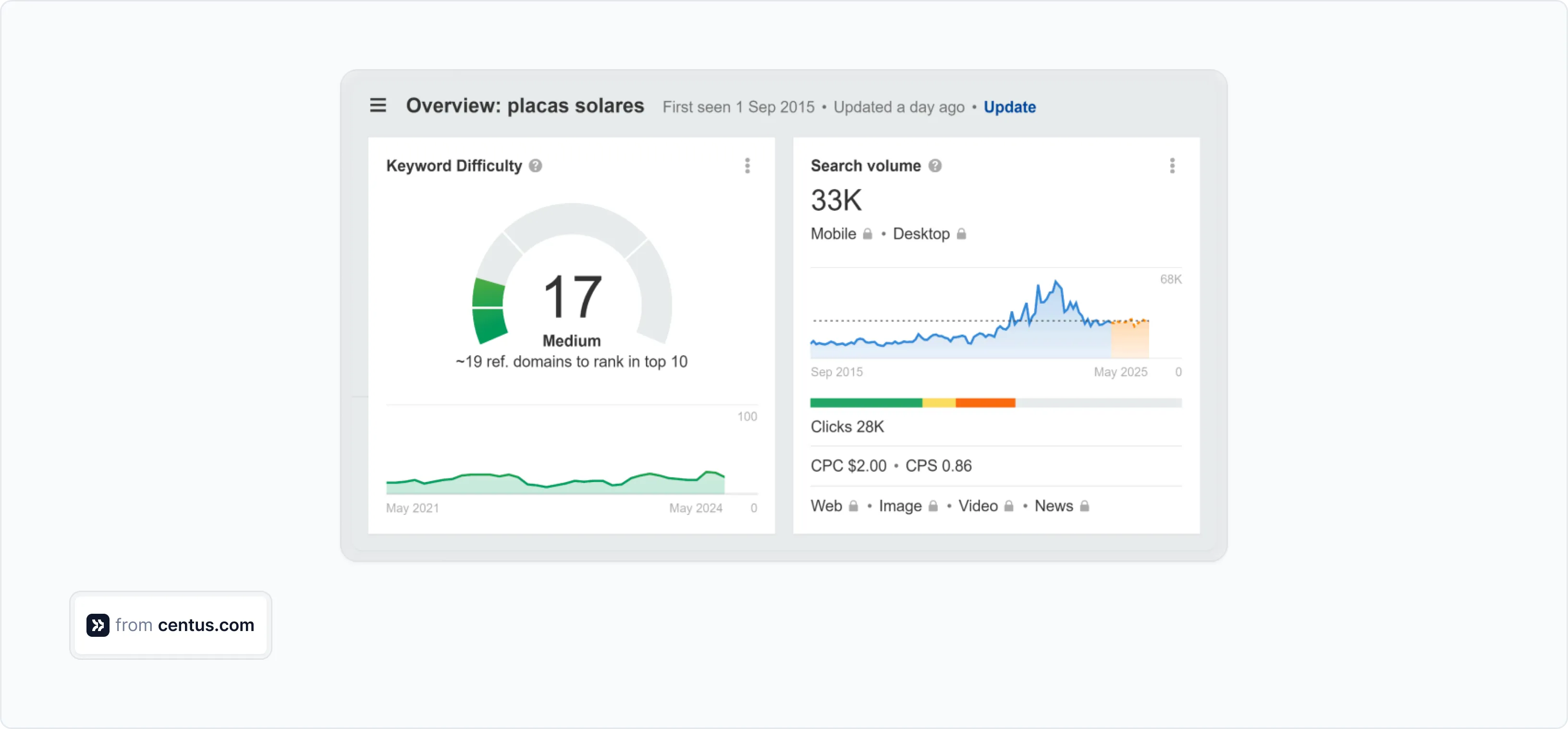
After finding the most suitable keywords, you need to also get the search intent right.
Search intent
What people mean when entering a search phrase differs across locales.
Take, for example, the UK market, where people google “solar panels” to learn more about them. The search results below display mainly solar panel guides:
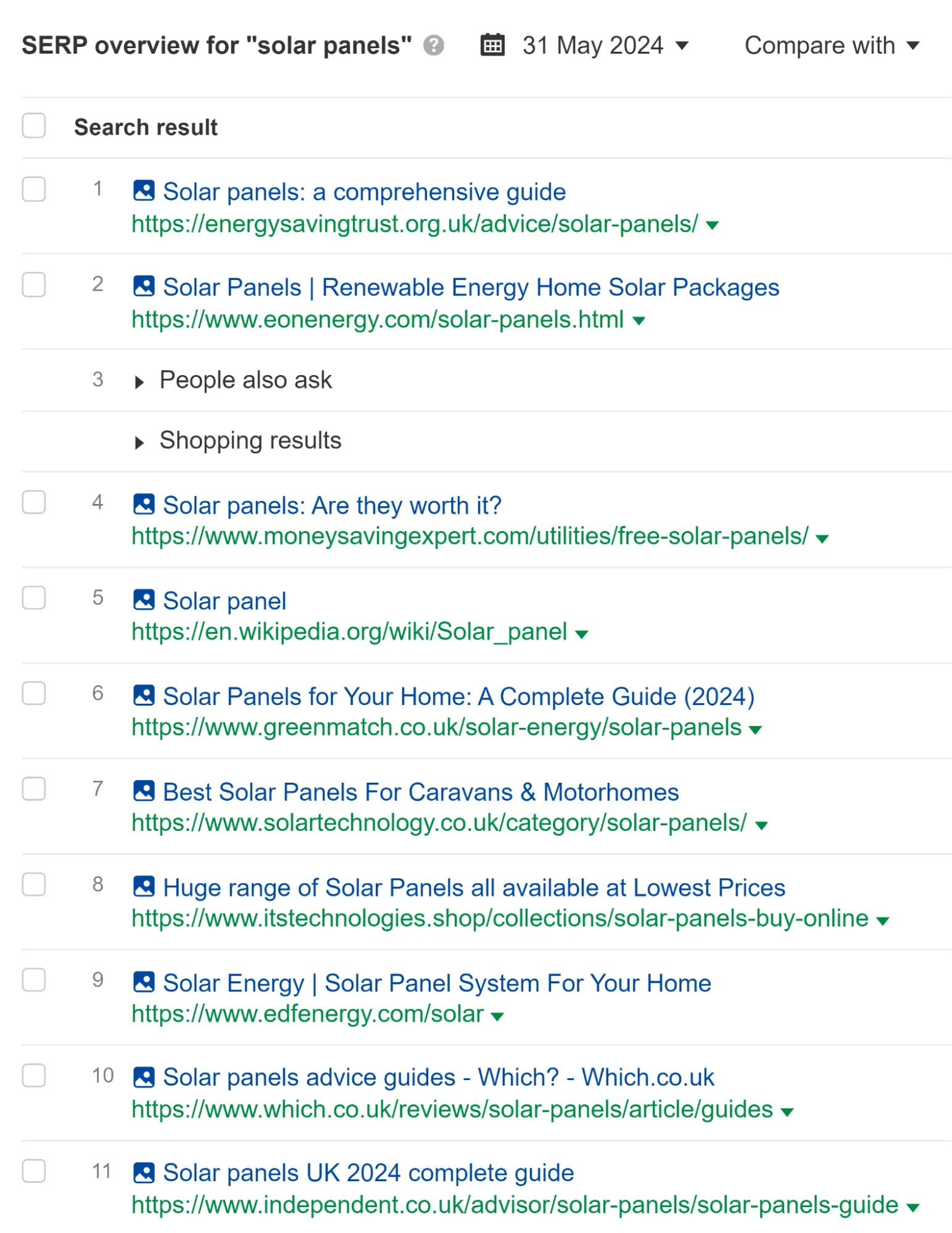
The same search query in the US returns transactional search engine results.
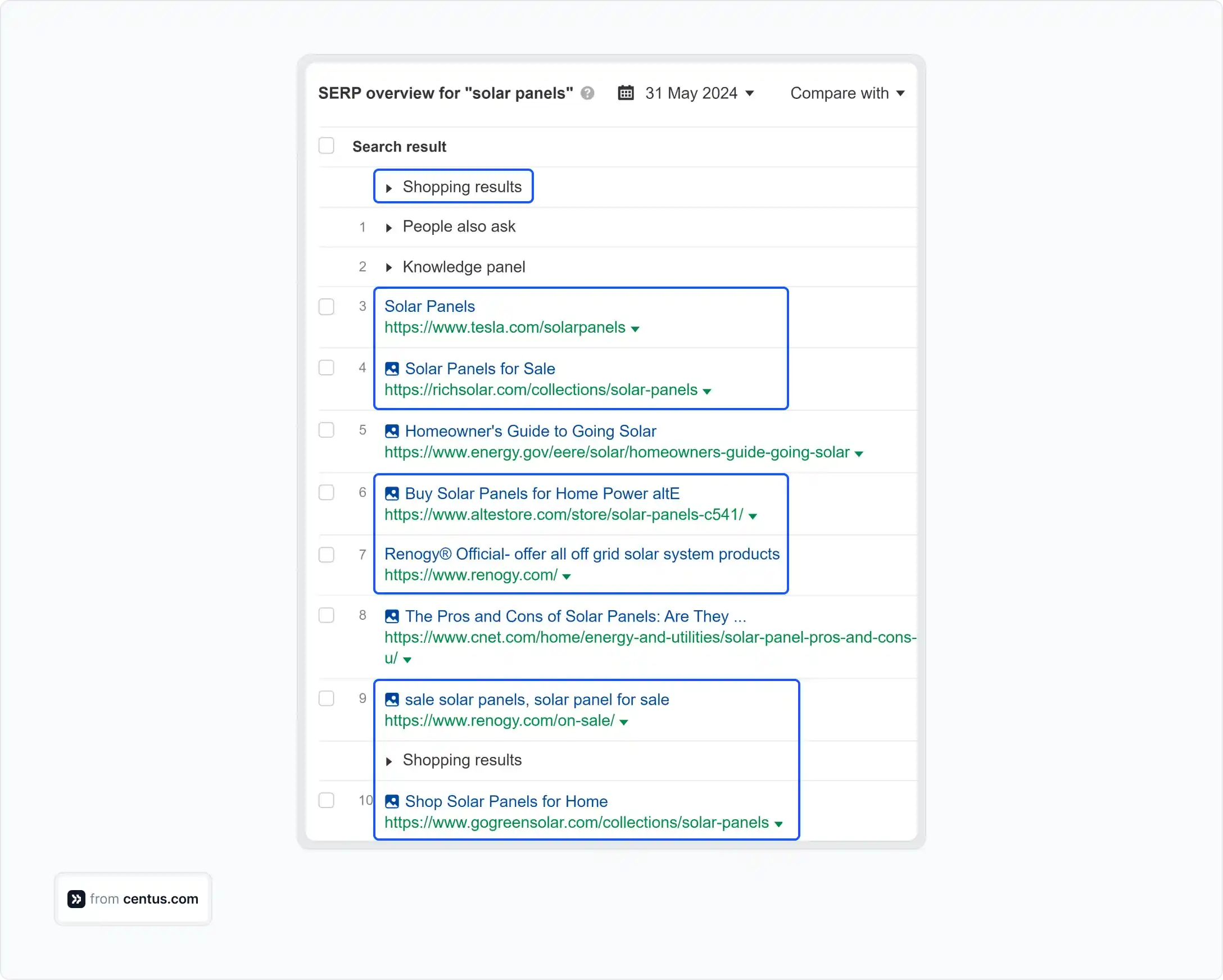
Pro tip: Don’t miss our detailed guide on multilingual website.
Step 7. Localize ads
Just as with SEO localization, ensure you target the correct keywords for PPC campaigns. Also, localize ads themselves.
Advertising localization might seem like a no-brainer, but there's more to it than meets the eye. You can’t always hook customers with directly translated ads. Instead, start by thoroughly investigating the market:
- cultural traditions, taboos, and norms
- local humor
- economy and purchasing power
- legal and regulatory compliance
- consumer behavior
- local competitors
- local partnerships and influencers
After thorough research, craft compelling ad copies for specific markets. Like Asana did for its Dutch ads.
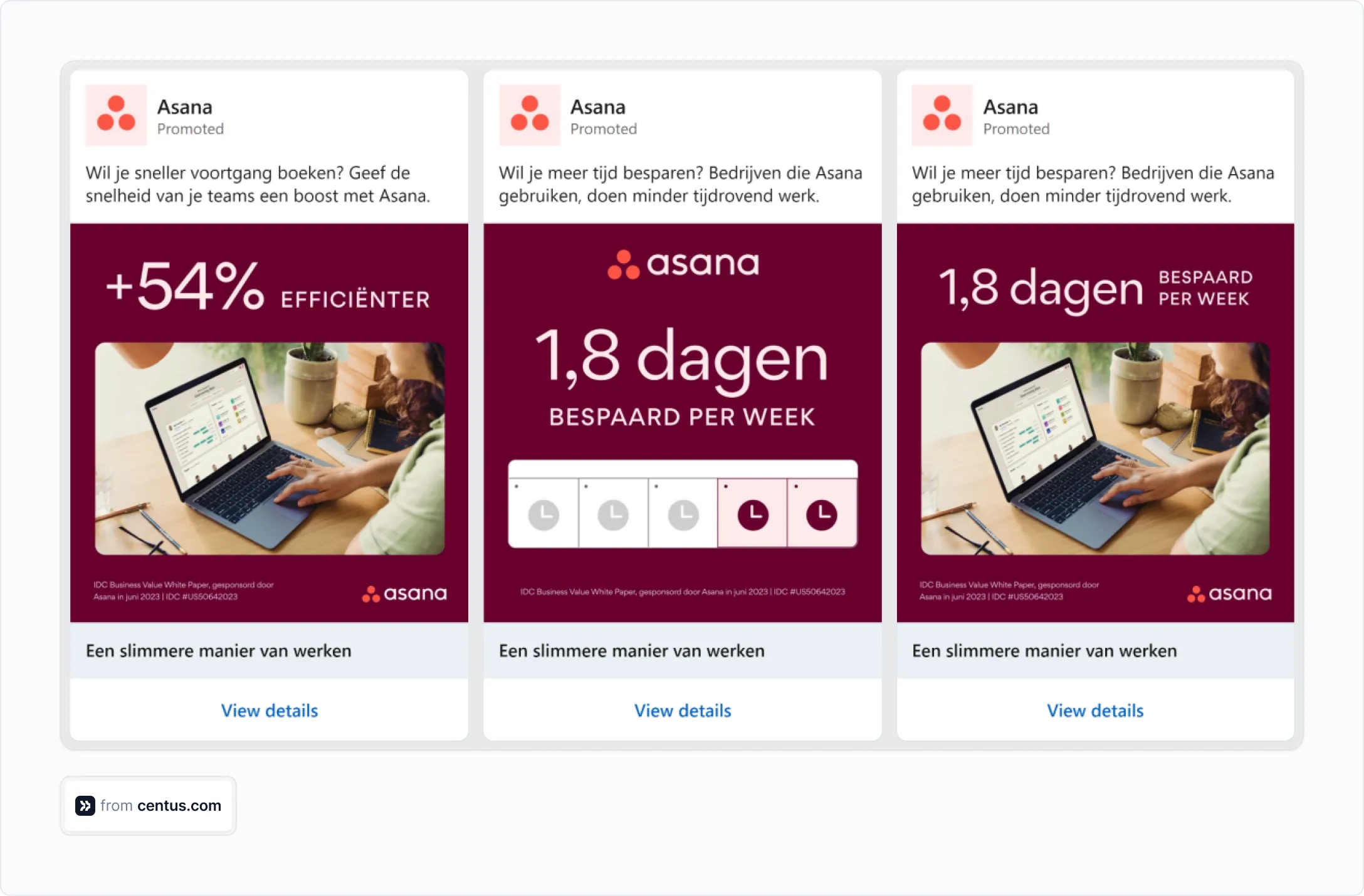
Of course, you don’t always have to create marketing copies from scratch. For geographically and culturally similar markets, translation would suffice. You can perform it effortlessly using Centus.
Marketing localization examples and lessons
“But, do I really need a marketing localization strategy? Can’t I use what worked in other places?” you wonder.
No.
A one-size-fits-all approach doesn't work. Every region has unique characteristics, and what works in one place might fall flat in another. No matter how geographically or culturally close they are.
To explain, let me show you good and bad examples of marketing localization.
Good: NordVPN’s localized paid search
NordVPN regularly shows localized paid search ads in Spain.
And boy, this tactic works!
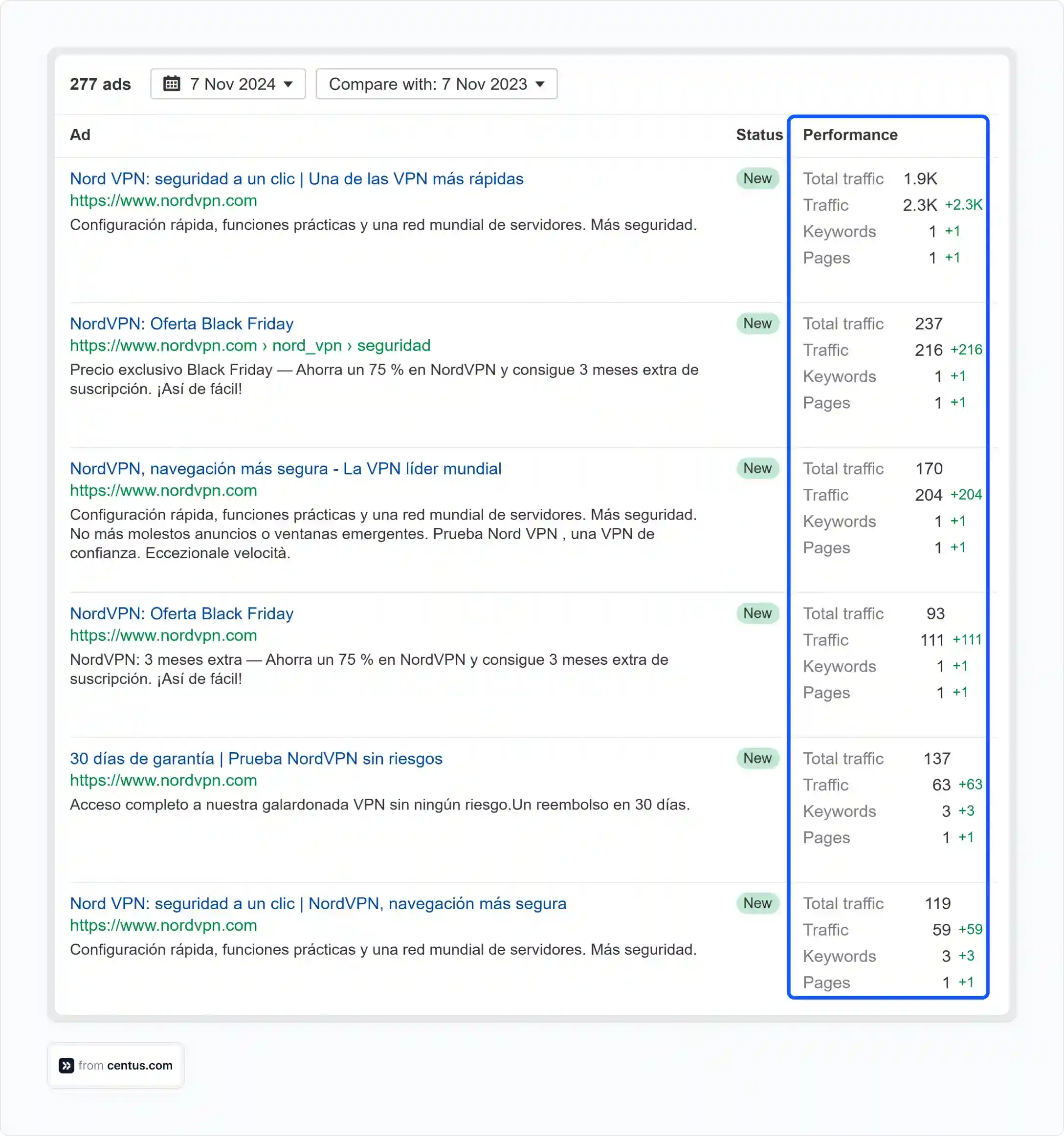
Over the last year, the company showed 277 ads to its Spanish prospects. And BOOM 💥— the campaign brought in around 118.8K of traffic.
Now let’s take another look at the paid ads performance of NordVPN.
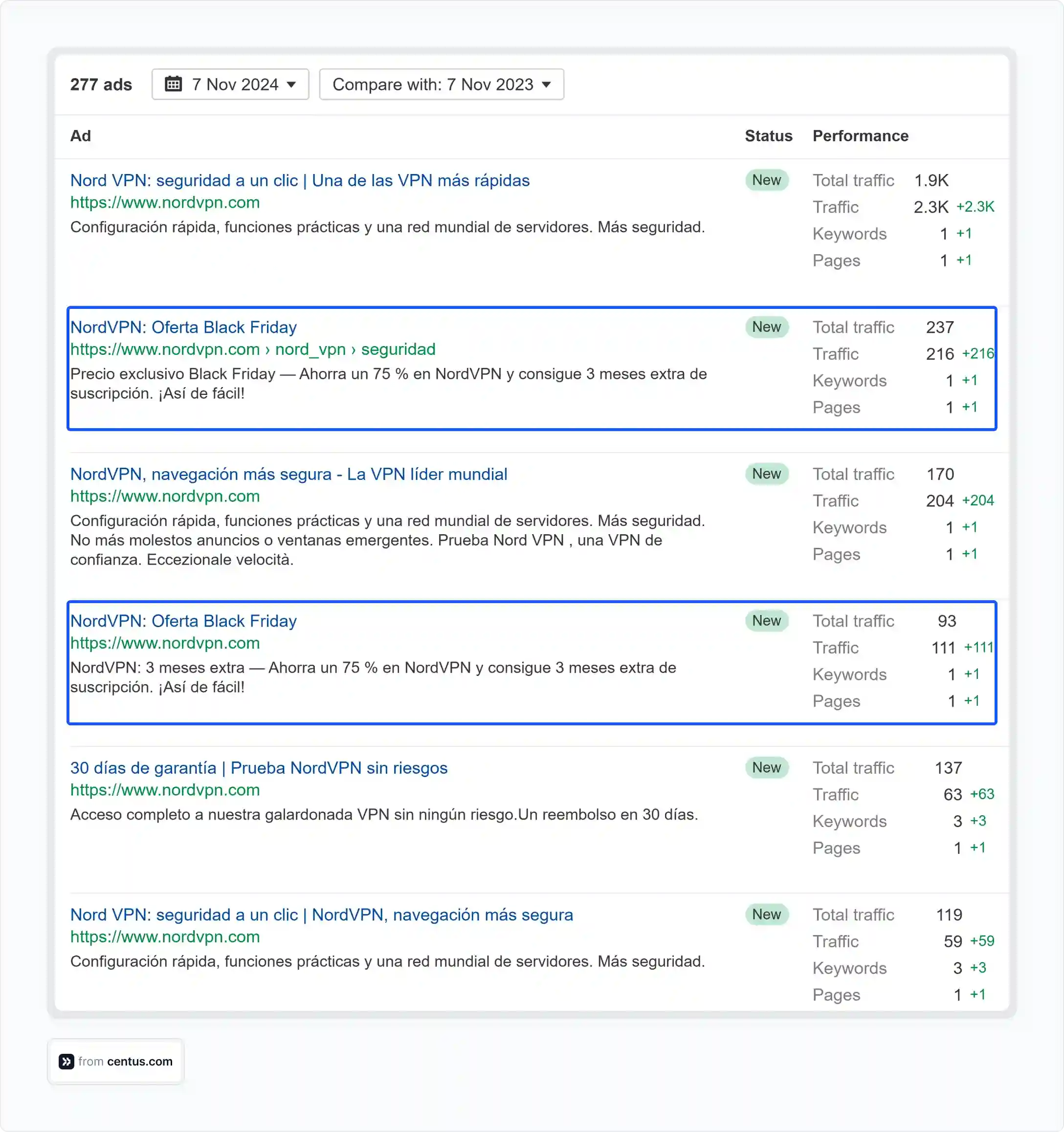
Note the traffic generated by the Black Friday ads. Localized Black Friday ads.
Now let’s see how unlocalized Black Friday ads fare in the Spanish market:
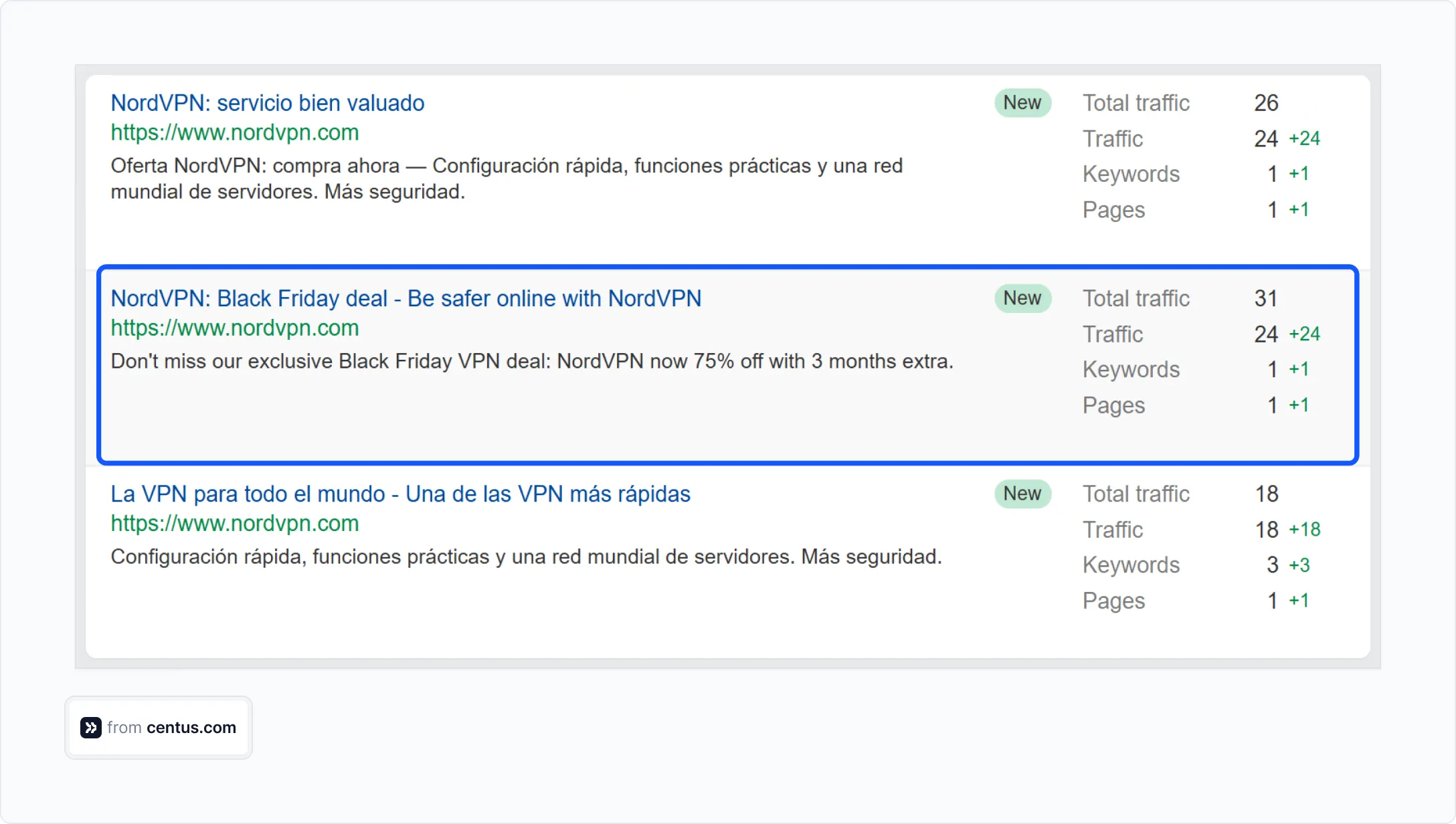
It’s the same ad, targeting the same keyword, and offering 75% off with 3 months extra. Yet, it brings several times less traffic.
The mysterious ways of Google? Or does marketing localization really work 🤔?
Lesson: Always translate and localize paid search ads for local markets.
Bad: McDonald’s Sundae Bloody Sundae
When promoting its Halloween Sundae, McDonald’s discovered the campaign’s name had negative connotations with the Bloody Sunday massacre in Northern Ireland.
The campaign was followed not by higher sales, but by a retraction and apologies.
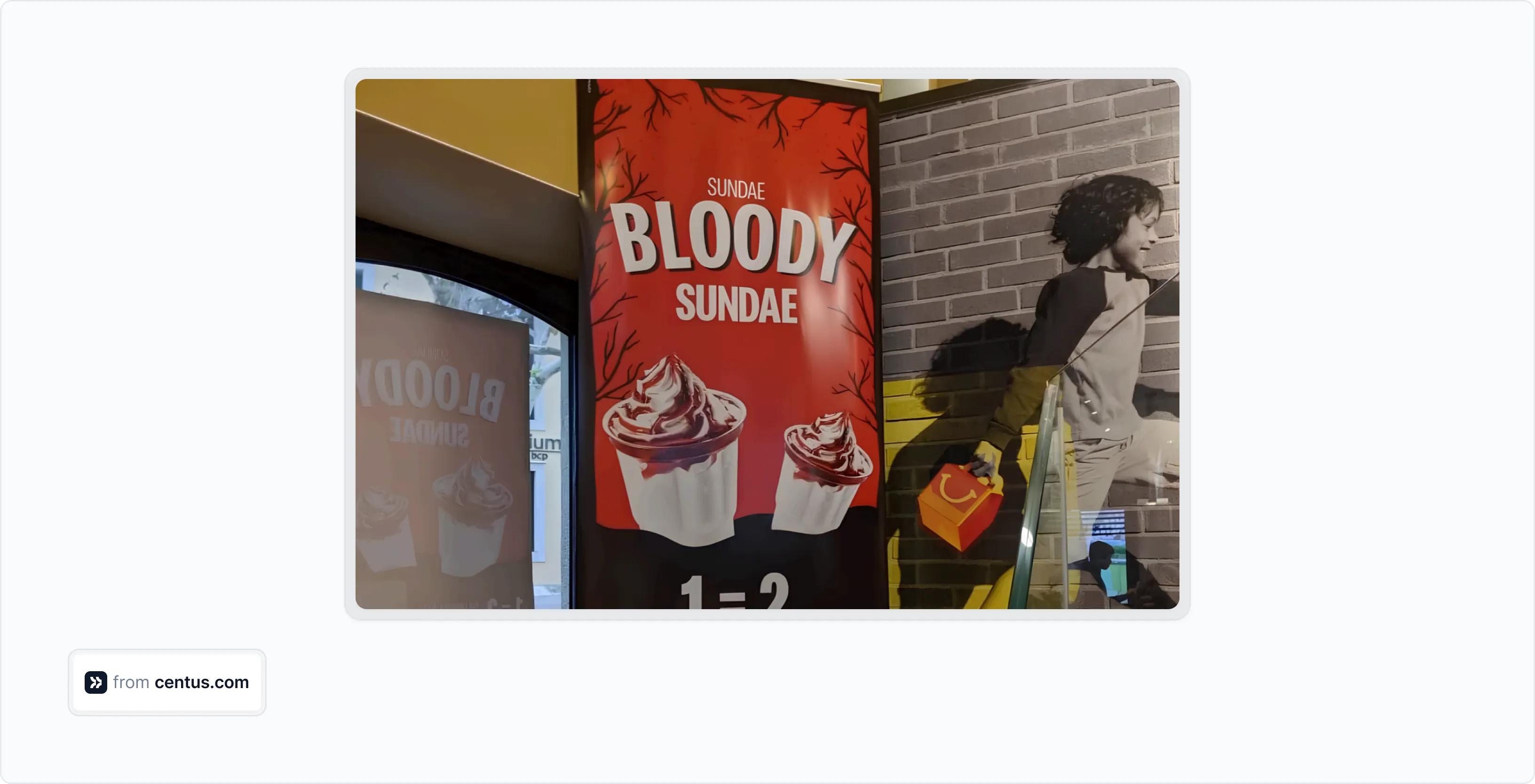 Source: The Telegraph
Source: The Telegraph
Yikes. 😬 Not the best way to sell strawberry desserts.
Lesson: Localize campaign and product names.
Good: Nike’s Year of Dragon sneakers in China
Earlier this year, Nike launched the Lunar New Year-inspired sneakers in China. The sneakers are painted in traditional gold and pink colors, bearing a bold dragon design.
 Source: NextShark
Source: NextShark
Nike leaned on local celebrities to get the new collection some time in the limelight. Deservedly, the campaign drew attention to the company’s collection and brand, thereby skyrocketing sales.
Lesson: Lean heavily on local culture.
Bad: American Dairy Association’s Got Milk ad
What can go wrong with automatic, assembly-line translations?
You guessed it: everything.
The American Dairy Association learned it the hard way after translating its Got Milk? tagline into Spanish.
Latino consumers were flabbergasted and offended by an ad with a tagline that roughly translates to “Are you lactating?”
Yes, I wouldn’t be super stoked about it either.
Lesson: Ensure human review of all automatic translations.
Challenges of localized marketing
Now, how do you not end up with a campaign from the bad examples above?
To launch a successful campaign, recognize the pitfalls of marketing localization and plan accordingly.
Challenge #1: Project management
When localizing your marketing materials—especially videos—you’ll find yourself juggling multiple email chains, Slack channels, and documents. On top of that, you’ll need to bring numerous project contributors together to make decisions and share ideas.
Solution: Use a collaborative localization platform where all project contributors and documents can be managed in one convenient place.
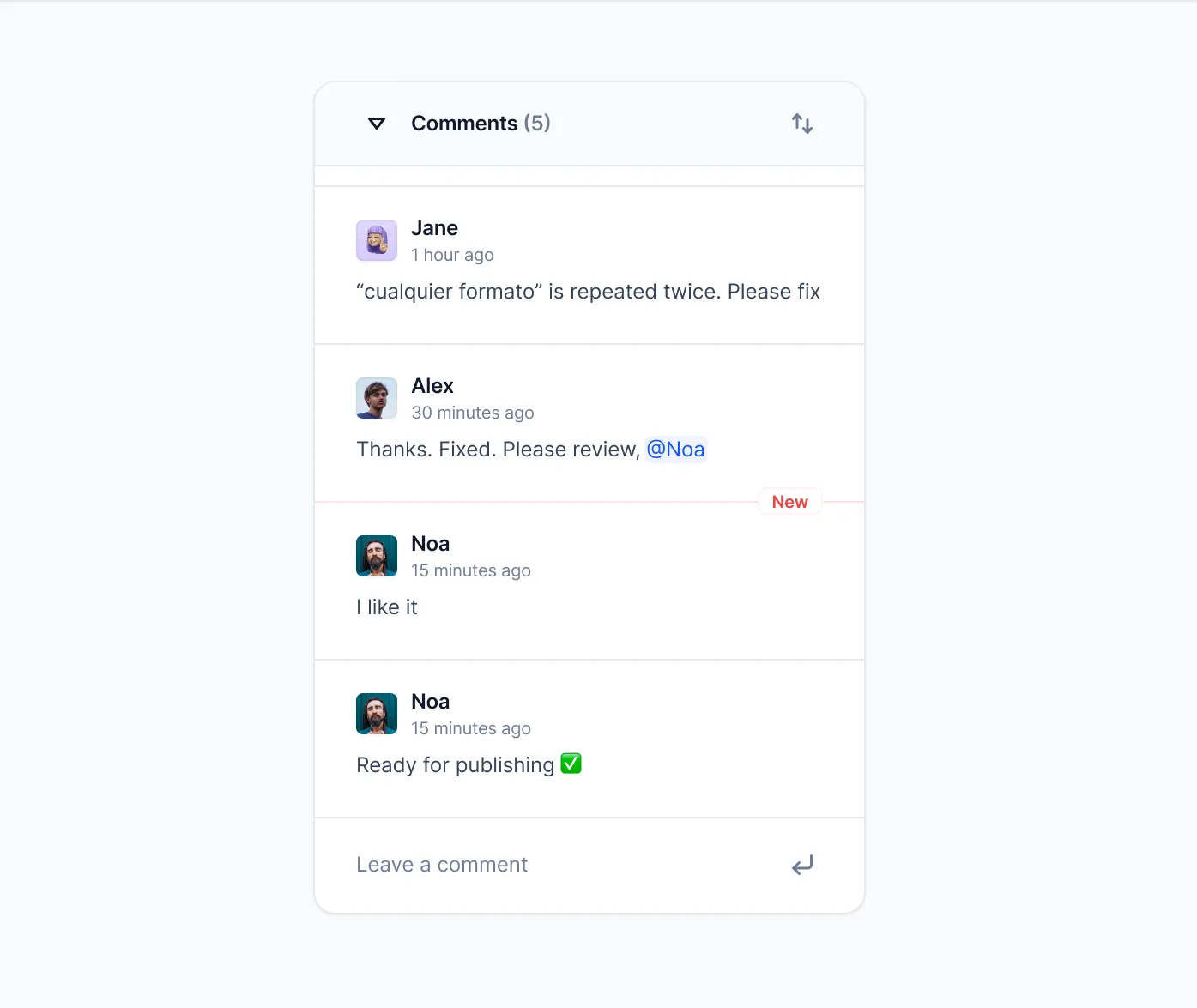
Challenge #2: Cultural alignment
You’re vying for a prospect’s attention in a new cultural setting. It’s all too easy to alienate your prospects if your message doesn’t blend in or oversteps boundaries.
Solution: Consult local experts to ensure your marketing campaign fits culturally.
Challenge #3: Product-market fit
Many companies fail to secure product-market fit before expanding globally. As a result, prospects aren’t willing to buy the localized product in quantities sufficient to justify the company’s global expansion efforts.
Solution: Tailor your product’s differentiators and unique value proposition to align with local preferences.
A case in point is Centus.
When marketing our solution in Saudi Arabia, where consumers aren’t price-sensitive, we don’t emphasize our competitive pricing. Instead, we highlight Centus’ collaborative features and ease of use.
Parting thoughts
To succeed as an international business, you must get your marketing localization strategy right.
Start by thoroughly researching each market’s culture, economy, and legal landscape.
Then, identify the right audience groups and localize marketing content for them.
Finally, translate your marketing materials using Centus—a localization platform for marketers.
Centus lets you create the most accurate marketing translations by enabling seamless collaboration between language experts, designers, and marketers.
Ready to start?
Click this linky link 👇
Get the week's best content!
By subscribing, you are agreeing to have your personal information managed in accordance with the terms of Centus Privacy Policy ->
Keep learning
15 min. read
Build a Global Content Strategy in 5 Steps
7 min. read
What is Product Localization? A Comprehensive Guide
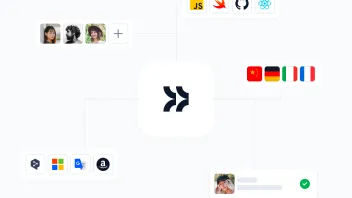
11 min. read
Content Localization: What to Localize and How to Do It
11 min. read
What Is Localization? A Comprehensive Overview
7 min. read
What is Global Localization: Principles & Strategy
16 min. read